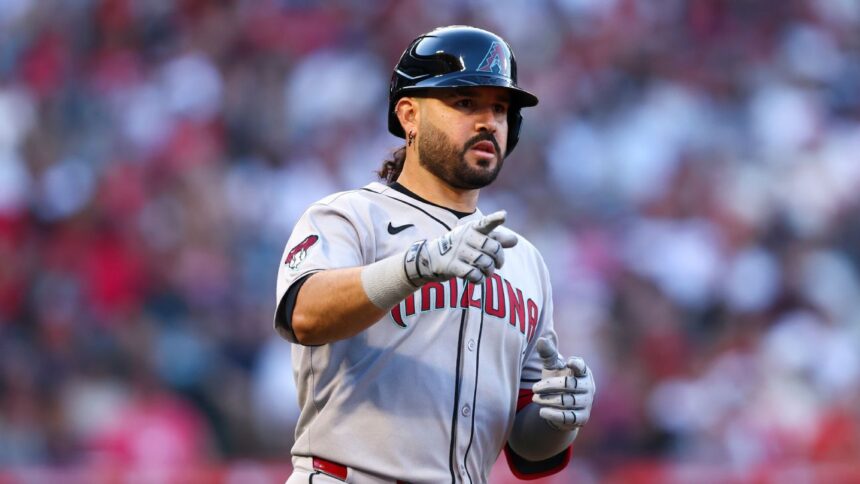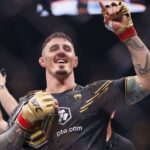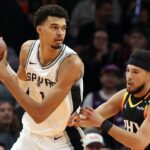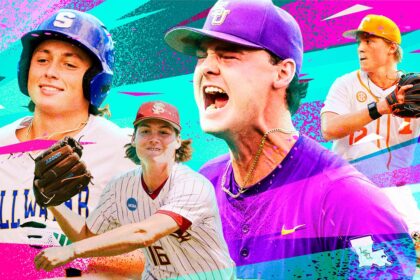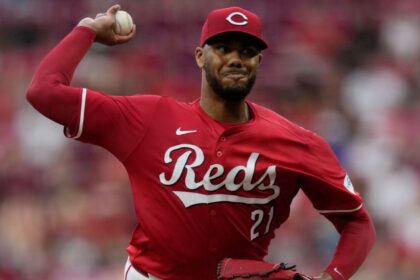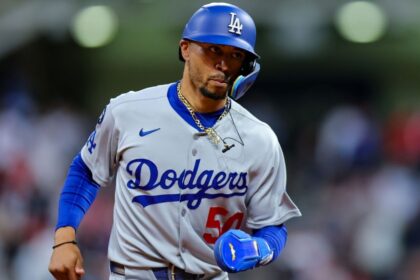Eight days before the MLB trade deadline for 2025, nearly three-quarters of Major League Baseball teams are within 5.5 games of a playoff spot. The impact of expanding the postseason to twelve teams becomes evident each July, when teams looking to offload players assess the landscape and see a market tilted in their favor. This is a moment of uncertainty for almost all baseball teams. Getting talent through a trade can help win a World Series. It can also cost players who could have helped win one in the future. Trading players can revitalize a farm system. It can also go wrong if the acquired talent doesn’t work out. Front offices are increasingly trying to steer their organizations towards the safest bet. The trade deadline is uncertainty personified. At the same time, with the July 31st deadline at 6 p.m. ET fast approaching, teams must be comfortable with that discomfort. Those planning to move Major League talent are beginning to make concrete requests. While most of the changes will take place in the last 72 hours before the deadline, the trading zone has arrived.
Although this is not a deadline with a truly great player available, there is enough talent available, and enough that can be obtained for the right price, to generate intrigue in the week and a bit to come. Below, in general terms, is how one of the most fundamental stretches of the baseball calendar is shaping up, with teams ranked by their expected levels of activity.
American League
National League
Teams Going Big
New York Yankees: They go all inBiggest needs: 3B, SP, RPBest option: Eugenio Suárez, 3BThe good thing for the Yankees is that they fit in very well with what the Arizona Diamondbacks are looking for as they consider moving Suárez, the most coveted player on the market. New York’s ability to develop starting pitchers with excellent numbers in the minor leagues is almost unmatched in the industry. What worries some front offices is the rarity with which those arms have become quality Major League players. Even so, it’s the kind of thing that allows the Yankees to turn down interest in Spencer Jones, who has been the hottest hitter in the minor leagues since his promotion to Triple-A and looks like an impact hitter despite his strikeout problems.
If New York fails with Suárez, options abound at third base: Ryan McMahon, Willi Castro, any of the young Mets available (Mark Vientos, Brett Baty, Ronny Mauricio, Luisangel Acuña), Ke’Bryan Hayes, Yoan Moncada, Jonathan India, Luis Urías, and the Yankees can direct their prospect capital towards pitching. There are enough arms available for the Yankees to get help. And they need it, because wasting another historically great season from Aaron Judge would be a shame.Chicago Cubs: They are going all inGreatest Need: SP, 3BBest option: MacKenzie Gore, SP The possibility of the Cubs obtaining a starter like Gore from Washington or Joe Ryan from the Minnesota Twins is unlikely due to the exorbitant cost it would require to get those players and Chicago’s propensity to play it safe amid budget constraints. At the same time, the Cubs have been one of the best baseball clubs this season, with an offense that is the envy of teams across the game, and their desire for a top-tier arm for the rotation is perhaps the most pressing need of any team at this deadline. The Cubs can win the World Series without one, of course, but adding Shota Imanaga and Matthew Boyd would give them the kind of comfort that legitimate contenders seek at this point in the season. In outfielder Owen Caissie, Chicago has the type of prospect around whom a package for a controllable arm can be built. If not Gore or Ryan, maybe it’s Mitch Keller of Pittsburgh. Regardless, the motivation for the Cubs is there. They want to win the division, yes, but above all they want to win a ring. Now is not the time to let what a model says about the lost surplus value in a deal get in the way of that. The Cubs want to go all in. We’ll see if they do when it matters.Toronto Blue Jays: They’re going all outBiggest needs: SP, RPBest option: Mitch Keller, SP The Blue Jays’ magical run this season has justified an aggressive tactic and if they don’t wake up on August 1st with at least one impact arm acquired, the disappointment will be palpable. With Chris Bassitt and Max Scherzer heading to free agency after this season and Kevin Gausman following in 2026, getting a starter under control, like Keller, who has three years and around $55 million remaining on his contract after this season, is a priority. If they can’t achieve that, there’s a lot of good pitching among the free agents. And the reliever market is full enough that they can complement Jeff Hoffman, Yariel Rodriguez, Brendon Little, Chad Green, Braydon Fisher, and Yimi García with one more arm to make some kind of nasty bullpen. The Toronto farm system, though improved, doesn’t carry the same weight as others that pursue top-tier talent. If that means negotiating from a surplus of Major League position players instead, it’s an option. There is still some skepticism about the Blue Jays’ ability to replicate the first 100 games during the last 62. The deadline offers an opportunity to prove they are more than worthy of holding the top spot in baseball’s most competitive division.Philadelphia Phillies: They are going all inBiggest needs: RP, OFBest option: Emmanuel Clase, RP The Phillies have quietly built one of the best farm systems in baseball, and the history of baseball operations president Dave Dombrowski of trading prospects for impact talent is unmatched. Still, with the Phillies entering a transition phase over the next few years, they are unlikely to sacrifice all their depth. That complicates their tactics at this deadline, because they are one of the few teams with the need and the ability to acquire a Class talent pitcher. The same goes for Cade Smith, another Guardian, and the two front-line relievers from the Twins, Jhoan Duran and Griffin Jax. Getting David Robertson for $6 million certainly helps things and serves as insurance against objectionable demands on high-level relief pitchers. And yet, adding Robertson plus a high-octane relief arm along with Orion Kerkering and Matt Strahm gives the Phillies a representative back end. If they can also add a right-handed hitting power-hitting outfielder (Adolis García is in the mix, and Luis Robert Jr. would also play), it will be a successful deadline for a team whose starting pitching is good enough to take them deep into October.Seattle Mariners: They are going all inBiggest needs: 3B, 1B, RPBest option: Josh Naylor, 1B The Mariners are in the position they are in (a playoff spot if the season ended today along with perhaps the best farm system in all of baseball) because they have been judicious and disciplined. Now is not the time for that. The market is full of opportunities for them to use some of their prospect depth and add to a team that has brought Cal Raleigh to the brink of something special. If the Mariners’ starters are healthy and can focus on adding a reliever to the nasty trio that are Andrés Muñoz, Matt Brash, and Gabe Speier. Seattle’s pitching alone will make the team good. Another bat or two on top of that can help them evolve from Bulbasaur to Venusaur. Naylor makes sense at first. Eugenio Suárez makes sense at third. Both together would be a home run. Willi Castro and Ryan O’Hearn are solid backup plans. Although the Mariners won’t negotiate with Colt Emerson or Jonny Farmelo, catcher Harry Ford could be in play. The costs are high. The Mariners are in as good a position as any to pay without causing significant damage to their long-term prospects.Colorado Rockies: In depthGreatest need: TalentBest asset: Seth Halvorsen, RP The Rockies, usually sleepwalkers at the trade deadline, have indicated to teams that they are much more open to making deals this July. It would help if they had better players, but their openness with Ryan McMahon, who has two years and $32 million left on his contract, is a start. Even as reliever Jake Bird’s ERA has spiked by nearly a run and a half since the start of July, he’ll draw interest. The real opportunity will come from Colorado’s willingness to move its fire-throwing relief arms, Halvorsen (100.2 mph average fastball) and Victor Vodnik (98.5 mph). As much as a team is happy to add Jimmy Herget for a lottery ticket prospect, Halvorsen in particular represents the Rockies’ best bet to recoup something substantial.Chicago White Sox: In depthBiggest need: Practically everythingBest Active: Luis Robert Jr., CF Robert’s rise in the last week has impressed scouts and defibrillated his trade value, which had plummeted for most of the season. However, the White Sox don’t want to move him for a reduced return, which leaves the outfielder in trade limbo. He won’t get what he would have gotten two years ago; nor is he the type of player a team trades for a mediocre prospect. The upside is too palpable.Right-handed pitcher Adrian Houser has been a boon of a signing for Chicago and will be a good backup plan for teams that fail in high-end starting pitching. Right-handers Steven Wilson and Dan Altavilla have performed well enough for teams to have interest, although neither’s FIP matches their ERA, which tempers the enthusiasm. Cam Booser has excellent conditions and would be a good low-key addition, particularly in a market that lacks left-handed relief help.
And as much as the White Sox would love to move Andrew Benintendi, he is owed another $5 million more this year and $31 million more for the next two seasons. The only way he moves is through a massive pay cut.Pittsburgh Pirates: In depthGreatest need: Offensive. For the good of all, please, just a little bit of offensive.Best Asset: Mitch Keller, SP Paul Skenes is not going anywhere. Neither is Oneil Cruz. But practically everyone else is there to be taken. Keller, 29, could end up being the best controllable starting pitcher to move. He has three years and around $55 million left on his contract, and despite his 3-10 record this season, Keller is a No. 3 caliber starter on a team with quality Major League bats. (None of the Pirates’ regulars have an average league OPS+ this season). As much as Keller could bring a great return, the real work could be done with Pittsburgh’s bullpen. Closer David Bednar is a solid alternative if Cleveland and Minnesota retain their relievers. Right-handed reliever Dennis Santana has been practically untouchable this season, with his exceptional command and weak contact induced that compensate for the lack of strikeouts. Caleb Ferguson’s hard-hit rate is in the 100th percentile, and his expected numbers are equally striking. Between Skenes, Bubba Chandler, and Konnor Griffin, 19, who looks like a future superstar, the Pirates still have some depth in prospects. The Pirates have shown the ability to develop good Major League arms. But this deadline offers the opportunity to add the kind of hitting they need to dream of being competitive again.Washington Nationals: In DepthBiggest need: PitchingBest asset: MacKenzie Gore, SP Trading Gore is a remote possibility, yes, but interim GM Mike DeBartolo, at least, is listening because A) that’s what good organizations do and B) the Nationals need a lot of help. It would also be something of a white flag for the immediate future unless owner Mark Lerner suddenly decides he wants to return the Nationals to their heyday of the 2010s, when they were regularly among the top 10 spending teams in MLB. And considering there are no signs of that, any hope of contention in the near future is disproportionately based on Gore, a 26-year-old strikeout master. They are also not considering moving star outfielder James Wood, and trading shortstop CJ Abrams is only fractionally more likely to happen. In the absence of a Gore agreement, the Nationals could trade their excess arms: closer Kyle Finnegan and right-hander Michael Soroka, who has spent the year in the rotation but was one of the best relievers in the game when moved to the bullpen last season. The utility player Amed Rosario should find a new home, and teams could try for first baseman Nathaniel Lowe (as long as Washington pays the more than $3 million remaining on his one-year contract). Since winning the World Series in 2019, the Nationals have finished in last place four out of every five years. With their rebuild stalled, now might be the time to make bold moves, even in the hands of a GM whose future, like the franchise he’s guiding, is unclear.Teams with questions that will shape the deadline
Arizona Diamondbacks: How much will they subtract?Biggest need: PitchingBest Active: Eugenio Suárez, 3B The Diamondbacks are in a posture mode, which is exactly what GM Mike Hazen should be doing, because no one has more influence than him at this deadline. He has the best bat in Suárez and possibly the next best in Josh Naylor. He has right-handers Zac Gallen and Merrill Kelly, who would fit into almost any playoff rotation. And they are all free agents after this season. So, as much as the Diamondbacks have the talent to catch fire and hold onto a postseason spot, they have a rare opportunity to take a decent farm system and turn it into one of the best in baseball overnight. Among the Yankees, Mariners, Cubs, and even the Mets, Suárez has many suitors and will get a player premium in return. Naylor is not a sure thing to leave, but teams expect him to move anyway. The way Arizona handles its pitching will be among the most fascinating subplots of the deadline. The Diamondbacks could trade Gallen, who is having a bad year, and try to re-sign Kelly. Or they could move Kelly and try to get him back during the winter while giving the qualifying offer to Gallen, who is more likely to receive more than $50 million in free agency, and the top draft pick that comes with that, than Kelly. Although the Diamondbacks have told teams they don’t intend to trade both, Arizona’s options don’t end there. Randal Grichuk is an outfielder who hits lefties. Closer Shelby Miller could return from the injured list soon. Alek Thomas is available and has three years of control beyond this season.Minnesota Twins: How much will they subtract?Greatest need: InfieldersBest Active: Jhoan Duran, RP The Twins are among the most frustrating teams in baseball because they have a lot of talent. Teams love Joe Ryan, and while he is perhaps the best arm available of anyone in the mix at the deadline, teams are looking at what the Twins are asking for to acquire Duran or Jax, at least two top-tier, 100-caliber prospects, and are not inclined to spend much time working on deals for a top 10 starter this season with two more years of club control.Perhaps the request from Duran and Jax will deflate between now and the deadline, but Minnesota is historically a team that sets a high bar on returns and does not deviate. For a team with championship aspirations, either of them would register as a monumental addition, so it’s not a completely unreasonable position for the Twins to take. But if they try to cash in with a relief arm, they also trade Brock Stewart, move Castro, a free agent who since mid-May is batting .280/.379/.495 while playing second base, third base, left field and right field, and get something for Edouard Julien or Jose Miranda, the future could look much brighter.

